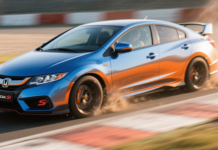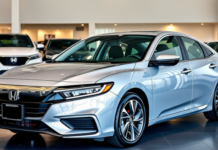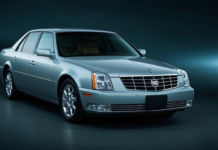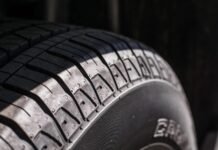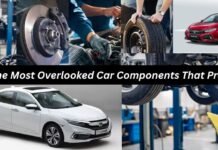Last Updated on September 15, 2023 by
If you enjoy winter driving, look for an SUV with all-wheel drive, 4-wheel drive, and traction control that can handle snow and other winter conditions. Mountain-ready SUVs must have towing capability and cargo room to tote your stuff, and you’ll also want safety features and high fuel efficiency for the daily drive after descending from those mountain peaks. If you intend to drive on challenging roads, such as those in hilly locations, you must have the appropriate vehicle for the conditions. If you want to travel self-driving to the mountains in the summer, check out this list of cars that can assist you in handling the rugged hilly terrain. This post will help you determine which car is the finest to consider for mountain driving. Because your initial move on your outdoor excursion is not on the ground but the gas pedal, these vehicles are the ideal choice for your outdoor road trip to the mountains.
Table of Contents
Land Rover Discovery 4
Since its introduction in 1989 as a more practical alternative to the Range Rover, the Discovery has been a mainstay of Land Rover’s line-up. It evolved through time into a high-end, spacious seven-seat family car capable of off-road. The British brand had perfected the formula with the Discovery 4, a huge hit thanks to its blend of Discovery 4 accessories with everyday versatility and a dash of Range Rover luxury. While it isn’t as sporty to drive or as well-equipped as modern rivals, it is incredibly comfortable, and its seven-seat interior is spacious – few cars are as family-friendly. There’s only one engine to pick from, but while the V6 diesel isn’t the most fuel-efficient, it’s smooth and powerful, and total operating expenses are typical of large SUVs. Numerous automobiles are selected from, but the better-equipped HSE variants are often in more demand. So, if you don’t mind preceding leather trim and other luxury features, the SE versions are a more cost-effective way to purchase a Discovery.
Toyota Land Cruiser
The Toyota Land Cruiser features eight seats and a V8 engine that produces slightly over 380 horsepower as standard. However, the car’s interior is where it shines. It combines the utility of a minivan with the luxury of a sedan. The V8 is equipped with four-wheel drive and can tow up to 8.500 pounds. Both the off-road capability and onboard equipment are outstanding. The third-row seats are split 50/50, allowing creative seating arrangements.
Toyota’s Kinetic Dynamic Suspension Mechanism is also standard on the Land Cruiser, and it works hard to keep all four tires on the ground at all times.
Jeep Grand Cherokee TrailHawk
Jeep pulls away from its conventional core of the SUV-cum-comfort stud with the Trail Hawk, investing substantially in the rough-and-tumble game. Jeep’s Quadra-Drive II air suspension raises the ground clearance from 8.2 to 10.8 inches at the touch of a button, which is the vehicle’s trademark feature. It made an otherwise teeth-chattering 40 minutes of a terrible drive into something palatable by rumbling on 20 miles of washboard Forest Service roads through Colorado’s Front Range.
The Trail hawk has an armored undercarriage and red hooks upfront for lifting smaller cars out of a jam, in addition to four-wheel drive and a terrain-select system. Jeep also features colossal Goodyear All-Terrain Adventure tires capable of conquering practically any terrain. But, despite its trail moxie, the Trail hawk’s inside is almost too lovely for the dusty, muddy, sloppy situations it was designed for.
Subaru Outback
The Subaru Outback is a 5-door crossover SUV initially produced in 2009. As a result, the inside is more spacious and comfier. In addition, there are many safety features, like
- sway warning,
- adaptive cruise control,
- lane departure warning and pre-collision braking system,
- dual-zone temperature control,
- electronic stability control and airbag package,
- Bluetooth, traction control,
- anti-lock brake system, and hill descent
The Outback is equipped with a DOHC 2.5L DAVCS FB25 H4 engine that produces 235 Nm of torque at 4000 rpm and 173 HP at 5800 rpm, and a DOHC 3.6L EZ36 DAVCS H6 engine that produces 335 Nm of torque at 4400 rpm and 191 kW at 6000 RPM. Lineartronic CVT transmission is responsible for all of this.
According to EPA estimation, the regular Outback fuel consumption ranges from 11 to 14 kilometers per liter on the highway. The Outback turbocharged variant shows a substantial drop in inefficiency on the highway, with highway ratings ranging from 9.7Km/L to 12.7Km/L.
Ford Expedition
The Expedition line-up received updated interior and exterior style and new choices and amenities. A new dashboard design was put in the interior, similar to the freshly updated Ford F-150 pickup vehicle. In addition, its infotainment system has been completely redesigned, with a new standard 12.0-inch touchscreen and high-quality inside materials.
Ford Expedition has an independent back suspension that allows for good handling. Passengers are comfortable due to the smooth ride, but the driver is punished due to the inaccurate steering and ungainly handling.
The V6 twin-turbocharged 3.5L engine of the Ford Expedition is connected to a 10-speed automated transmission. While the basic engine puts out 380 horsepower and 470 pound-feet of torque, limited variants have 400 horsepower and 480 pound-feet of torque.
Wrapping Up
Remember that a car is more than just a vehicle with incredible looks; it’s also a tool, especially when you advance into the mountainous territory. Ground clearance, break-over angle, and underbody protection are critical factors to consider when choosing a car. But don’t be deceived by flashy badging and body cladding over wheel arches; they won’t aid you through challenging routes.















